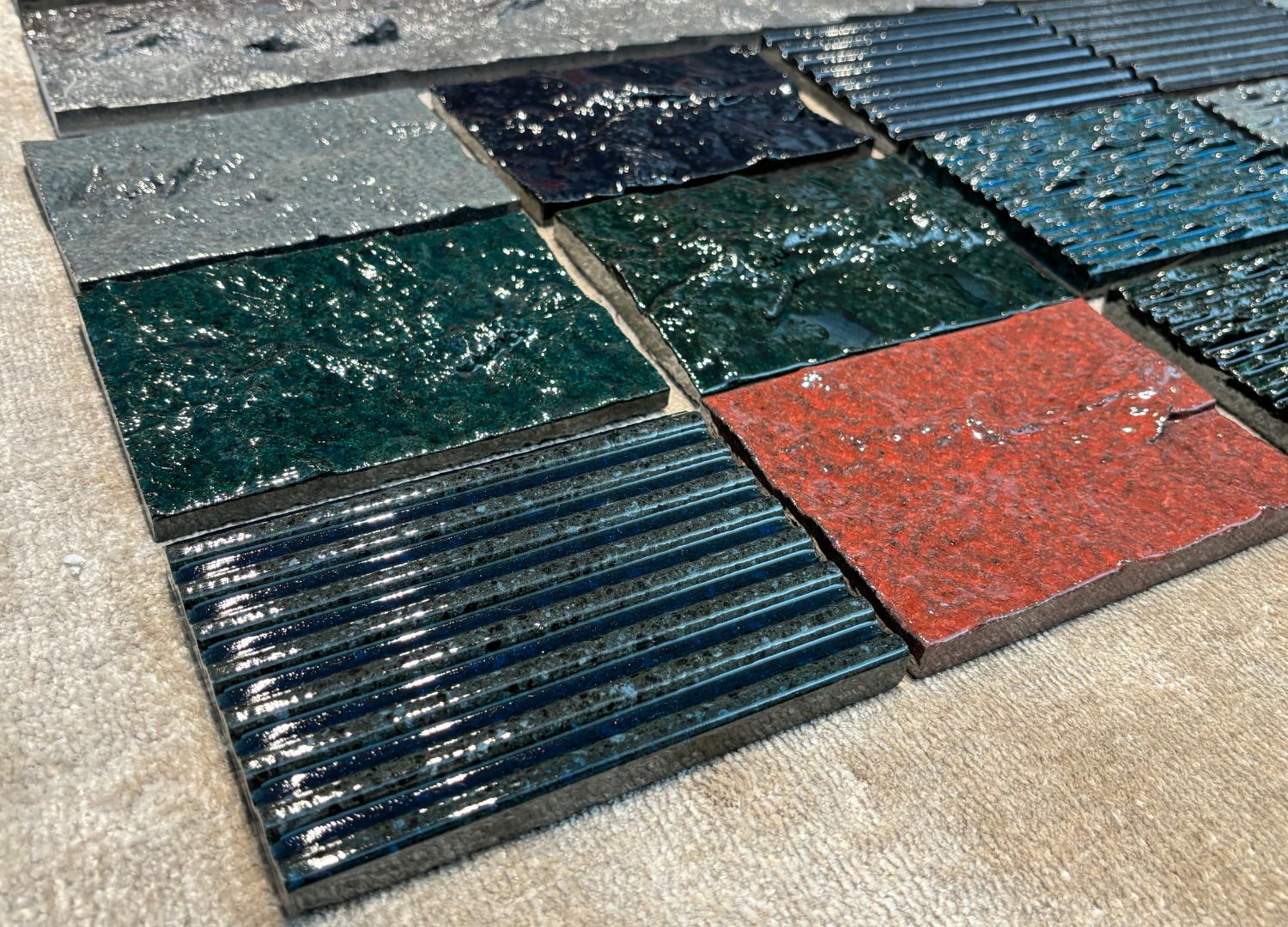From the purest lava stone to refined collection of tiles and furnishings
With its origins deeply rooted in the volcanic landscapes of Mount Etna in Sicily, the Italian brand Lapilli has introduced a novel approach to designing with lava stone, combining the ancient allure of lava stone with the elegance of modern design aesthetics.

In the realm of natural materials, lava stone remains a path less traveled. At the forefront of exploring this terrain stands Lapilli, a brand born from the Italian company Magma Ceramiche’s extensive experience spanning over 40 years.
In recent years, my journeys to Iceland have allowed me to encounter a variety of projects, both in Design and Architecture, that make use of this stone in its raw form. However, it was only lately that I came to understand the existence of entities in Italy that have truly elevated this material through dedicated research and experimental efforts.

Lapilli exemplifies this pursuit, aiming to uplift and enrich the venerable and ancient lava stone from Mount Etna. The brand reimagines lava stone, turning it into top-tier and forward-thinking products that align with modern aesthetic principles. Through skilled glazing techniques, Lapilli enhances the stone beyond its original form, offering sophisticated finishes that bring out its natural patterns and hues. Employing cutting-edge glazing methods, they ensure that each piece of stone surpasses its primitive form to emerge as a tastefully finished item, all while preserving its distinct features.
I recently had the chance to engage with Onofrio Acone, the commercial director of the Brand, whom I asked to explain to me in more detail how the processing of this precious material works and what its current and potential applications are. Here are his responses.

When and why did your company decide to experiment with the use of lava stone?
Onofrio Acone:
“Lapilli is a brand under our family-owned company, Magma Ceramiche, which has been immersed in the world of ceramics since its inception in 1982. Our experimentation with lava stone began in the late 1980s, driven by our passion for ceramics and the desire to explore new materials. Over the years, we honed our skills and expertise in glazing lava stone, refining our techniques throughout the 1990s. Today, with over 40 years of experience in enameling and crafting lava stone, Lapilli stands as a testament to our commitment to innovation and mastery in this remarkable material.”

What sets lava stone apart from other materials? What are its specific properties?
Onofrio Acone:
“Lava stone is renowned for its striking beauty and fascinating origin, formed through the eruptions of Mount Etna. Its remarkable properties include high resistance to impact, foot traffic, and wear due to its compact and durable nature. Furthermore, enameling with natural pigments enhances its value, not only aesthetically but also functionally, making it impermeable and suitable for various domestic and commercial applications such as flooring, wall cladding, bathroom and kitchen countertops, as well as surfaces for spas, wellness centers, and even pools, offering a wide range of colors and decorative possibilities.”

In terms of process, what are the key steps in working with this stone? And what customization possibilities does it offer?
Onofrio Acone:
“The process of working with lava stone is intricate yet captivating. It begins with meticulously selecting the finest blocks from the Nicolosi quarry in Sicily, followed by the careful curation of flawless slabs free from impurities, sourced from trusted suppliers for enameling. The crucial step lies in the enameling process, which demands expertise due to its entirely manual nature. Colors and glazes used for ceramicizing lava stone, before firing, do not accurately reflect the final hue, making precise dosage challenging to achieve the desired chromatic effect.
The customization possibilities for lava stone are extensive. We offer a bespoke service tailored to architects and designers, highly valued for crafting prototypes of decoration and color to meet their specifications. Consequently, every lava stone project is inherently unique, reflecting the exclusivity of our craftsmanship.”

To date, what are the applications of this material in the world of design and architecture?
Onofrio Acone:
“The most common uses of glazed lava stone have traditionally been for 3 cm thick slabs used as kitchen and bathroom countertops. Today, Lapilli introduces a range of thin planks called Lava Plank, measuring just 1 cm thick with considerable lengths up to 220 cm, suitable for indoor and outdoor flooring and cladding.
Lapilli also offers non-slip and frost-resistant enamels for outdoor use, with a focus on preserving the natural textures and patterns of the stone through the enamel, rather than fully covering them. Lapilli’s innovative use of glazed lava stone is tailored to the precise details and finishes demanded by the modern design world.”














